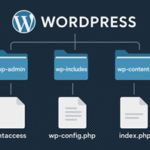As we look into 2025, machine learning (ML) continues to reshape every industry, which has potential for both growth and innovation, from healthcare to finance to entertainment. With the robustness of Python, its simplicity, and its huge ecosystem, it remains the most preferred language to build ML models. Even if you are new to programming or not actively programming in Python in your current job function, you will still need solid foundational knowledge, tools, and prior practice to be a successful machine learning coder. This guide highlights everything you need to know before you dive into programming in Python and machine learning, setting you up on the starting line in this vibrant and exciting new area.
Why Python for Machine Learning?
Python’s popularity in machine learning stems from its readability, versatility, and extensive library support. Libraries like TensorFlow, scikit-learn, and PyTorch make complex ML tasks accessible, while Python’s straightforward syntax lowers the barrier for beginners. In 2025, Python’s dominance is reinforced by its active community, regular updates, and integration with modern technologies like cloud platforms and GPUs for faster computation. Additionally, Python’s flexibility allows seamless transitions from prototyping to production, making it ideal for both learning and professional applications.
Prerequisites for Learning Python Machine Learning
Before diving into machine learning, you’ll need a solid foundation in several key areas. Here’s what to focus on:
1. Python Programming Basics
A strong grasp of Python is essential. You should be comfortable with:
- Variables and Data Types: Understand integers, floats, strings, lists, dictionaries, and tuples.
- Control Structures: Master loops, conditionals (if-else), and functions.
- Data Structures: Familiarize yourself with lists, arrays, and dictionaries for data manipulation.
- Libraries: Get acquainted with foundational libraries like NumPy for numerical operations and pandas for data analysis.
If you’re new to Python, platforms like Codecademy or freeCodeCamp offer beginner-friendly courses to build these skills.
2. Mathematics for Machine Learning
Machine learning relies heavily on mathematical concepts. Key areas include:
- Linear Algebra: Understand vectors, matrices, and operations like dot products, which are crucial for algorithms like neural networks.
- Calculus: Grasp derivatives and gradients, especially for optimization techniques like gradient descent.
- Probability and Statistics: Learn about distributions, hypothesis testing, and probability, as they underpin algorithms like Bayesian models and decision trees.
- Optimization: Familiarize yourself with concepts like loss functions and minimization techniques.
Don’t worry if math feels daunting—online resources like Khan Academy or 3Blue1Brown offer accessible explanations tailored for ML.
3. Data Handling and Preprocessing
Machine learning is all about data. You’ll need to know how to:
- Clean Data: Handle missing values, outliers, and inconsistencies.
- Transform Data: Normalize, scale, or encode categorical variables.
- Visualize Data: Use libraries like Matplotlib or Seaborn to explore data trends.
Tools like pandas and NumPy are your best friends here, with Jupyter Notebooks providing an interactive environment for experimentation.
4. Basic Understanding of Machine Learning Concepts
Before coding, familiarize yourself with ML fundamentals:
- Supervised vs. Unsupervised Learning: Supervised learning (e.g., regression, classification) uses labeled data, while unsupervised learning (e.g., clustering) works with unlabeled data.
- Common Algorithms: Learn about linear regression, logistic regression, decision trees, and k-means clustering.
- Evaluation Metrics: Understand accuracy, precision, recall, and mean squared error for assessing model performance.
Essential Python Libraries for Machine Learning
In 2025, Python’s ML ecosystem is richer than ever. Here are the must-know libraries:
1. scikit-learn
Scikit-learn is the go-to library for beginners. It offers tools for data preprocessing, model training, and evaluation, supporting algorithms like SVMs, random forests, and k-nearest neighbors. Its user-friendly API makes it ideal for quick prototyping.
2. TensorFlow and PyTorch
For deep learning, TensorFlow and PyTorch dominate. TensorFlow excels in production-grade applications, while PyTorch is favored for research due to its flexibility. Both support neural networks and GPU acceleration, critical for large-scale models.
3. NumPy and pandas
NumPy handles numerical computations, such as matrix operations, while pandas excels at data manipulation and analysis. These libraries are foundational for preparing data for ML models.
4. Matplotlib and Seaborn
Visualization is key to understanding data. Matplotlib creates customizable plots, while Seaborn offers high-level, aesthetically pleasing visualizations for statistical analysis.
5. XGBoost and LightGBM
For advanced ML tasks, gradient boosting libraries like XGBoost and LightGBM provide high-performance solutions for classification and regression problems, especially in competitions like Kaggle.
Setting Up Your Environment
To start coding, set up a robust development environment:
- Install Python: Use Python 3.9 or later, available from python.org.
- Package Manager: Use pip or conda to install libraries. For example, pip install scikit-learn, tensorflow, numpy, pandas.
- IDE or Editor: Jupyter Notebooks are great for interactive coding, while VS Code or PyCharm offer robust environments for larger projects.
- Cloud Platforms: In 2025, platforms like Google Colab or Kaggle Kernels will provide free GPU access for deep learning tasks.
Steps to Start Your Machine Learning Journey
- Learn the Basics: Start with a simple project, like predicting house prices using linear regression with scikit-learn. Use datasets from Kaggle or UCI ML Repository.
- Practice Data Preprocessing: Clean and preprocess datasets to understand real-world data challenges.
- Experiment with Algorithms: Try different algorithms (e.g., decision trees, SVMs) to see how they perform on the same dataset.
- Dive into Deep Learning: Once comfortable, explore neural networks with TensorFlow or PyTorch.
- Join Communities: Engage with communities on platforms like Kaggle, GitHub, or X to share projects and learn from others.
Common Challenges and How to Overcome Them
- Overwhelming Choices: With so many algorithms and tools, start with scikit-learn for simplicity before exploring advanced frameworks.
- Overfitting: Learn regularization techniques like L1/L2 penalties or dropout to prevent models from memorizing data.
- Data Quality: Spend time cleaning data, as poor data leads to poor models.
- Computational Resources: Use cloud platforms like Google Colab for resource-intensive tasks if your local machine is limited.
Trends in Python Machine Learning for 2025
The ML landscape is evolving rapidly. In 2025, key trends include:
- Automated Machine Learning (AutoML): Tools like Auto-sklearn and Google’s AutoML simplify model selection and tuning.
- Explainable AI: Libraries like SHAP and LIME help interpret complex models, addressing ethical concerns.
- Edge ML: Frameworks like TensorFlow Lite enable ML models to run on devices like smartphones, expanding real-world applications.
- Ethical AI: Focus on fairness, bias mitigation, and transparency is shaping how models are built and deployed.
Resources to Get Started
- Online Courses: Platforms like Coursera (Andrew Ng’s Machine Learning Specialization), edX, or Fast.ai offer structured learning paths.
- Books: “Hands-On Machine Learning with Scikit-Learn, Keras, and TensorFlow” by Aurélien Géron is a must-read.
- Communities: Join Kaggle for datasets and competitions, or follow ML discussions on X for real-time insights.
- Practice Platforms: Use Kaggle, HackerRank, or LeetCode to hone your skills.
Wrapping It Up!
There will never be an end to innovation for Python machine learning in 2025, but to be successful, you will need to be prepared. The right preparation means understanding the Python basics, having some fundamental math knowledge, and familiarizing yourself with some important libraries. You need to know Python and the machine learning libraries that we discussed in the previous chapter, such as scikit-learn or TensorFlow. Start small, practice often, be curious (i.e., machine learning is a learning journey), and if you have the right foundation, it will not only help you to understand machine learning but also enable you to be part of its exciting future.
- Python Machine Learning: What You Need to Know Before You Start
- There will never be an end to innovation for Python machine learning in 2025, but to be successful, you will need to be prepared.
- Python machine learning,
Related posts:
 Why Offline Music Is Still Essential in a Streaming-First World
Why Offline Music Is Still Essential in a Streaming-First World
 Exploring Different Animation Techniques in Android App Development
Exploring Different Animation Techniques in Android App Development
 The Secret to Success Online: Choosing the Right Web Partner in 2025
The Secret to Success Online: Choosing the Right Web Partner in 2025
 WordPress Admin Bar Issues: The Interface and Security Problem You Cannot Overlook
WordPress Admin Bar Issues: The Interface and Security Problem You Cannot Overlook
 WordPress Admin Bar Issues: The Interface and Security Problem You Cannot Overlook
WordPress Admin Bar Issues: The Interface and Security Problem You Cannot Overlook
 How to Choose the Best Web Development Company for Your Business
How to Choose the Best Web Development Company for Your Business
 DXB APPS is the ideal Mobile App Development Company in Dubai
DXB APPS is the ideal Mobile App Development Company in Dubai
 Inside WordPress: Understanding wp‑admin, wp‑includes, wp‑content & Root Files
Inside WordPress: Understanding wp‑admin, wp‑includes, wp‑content & Root Files






